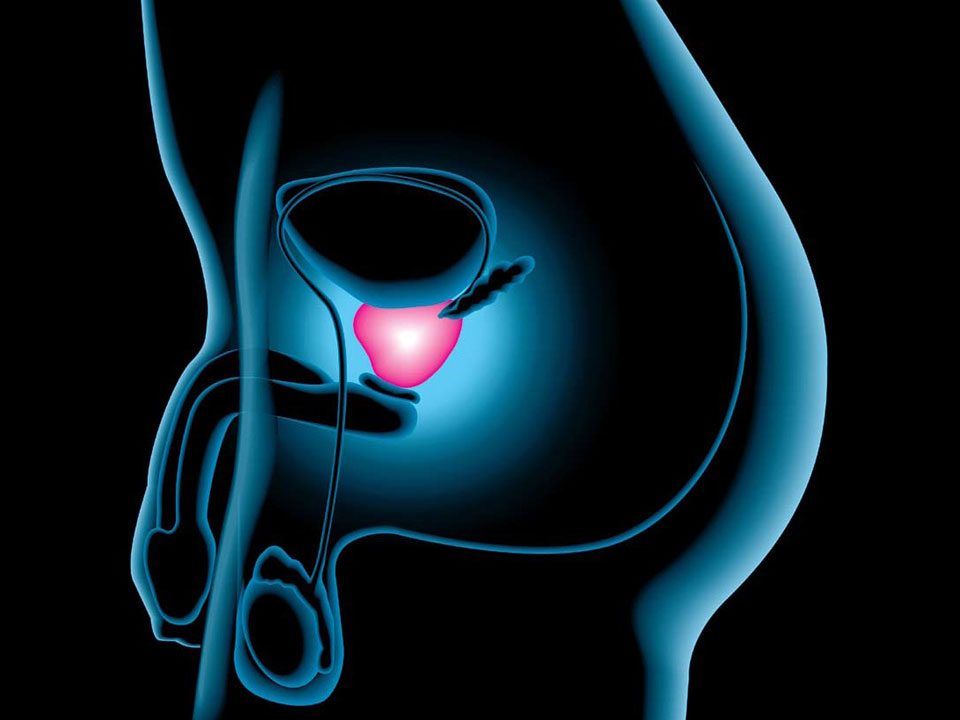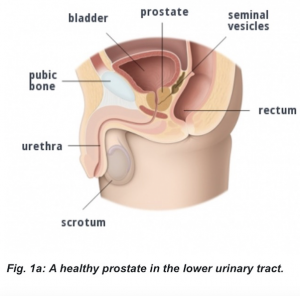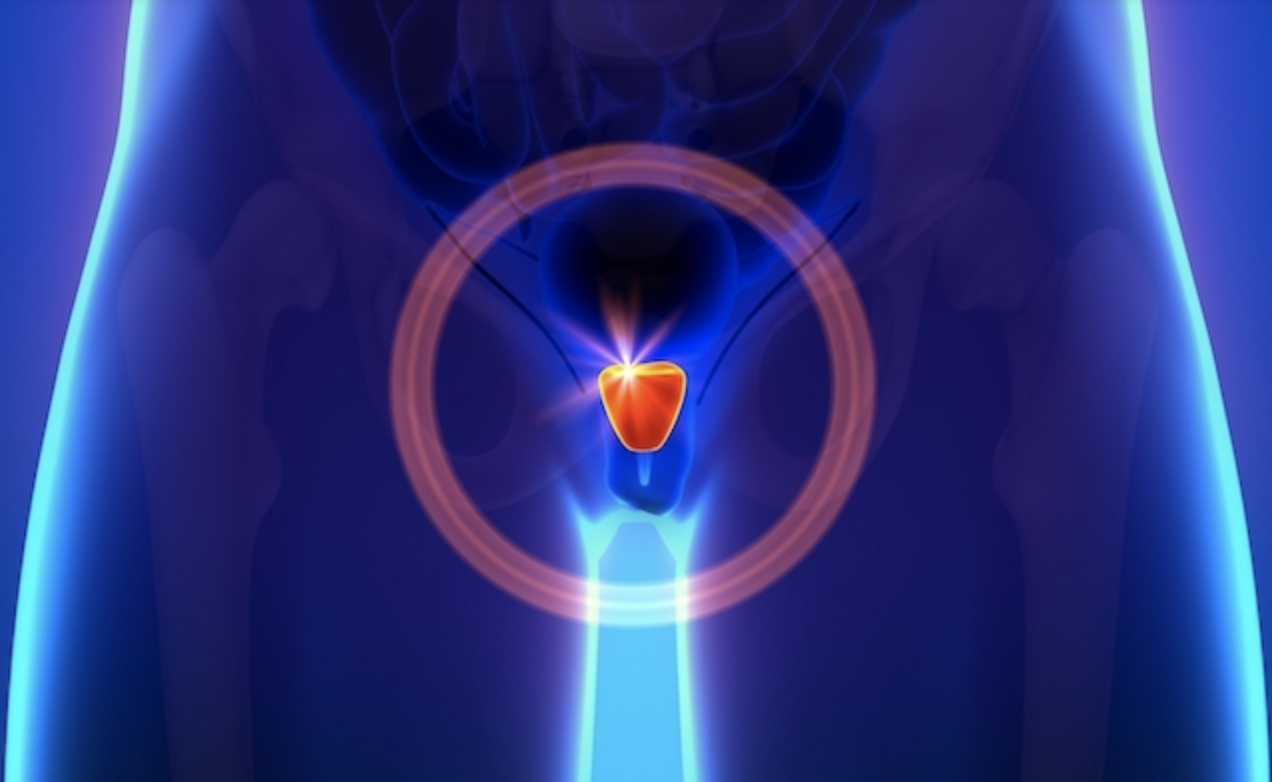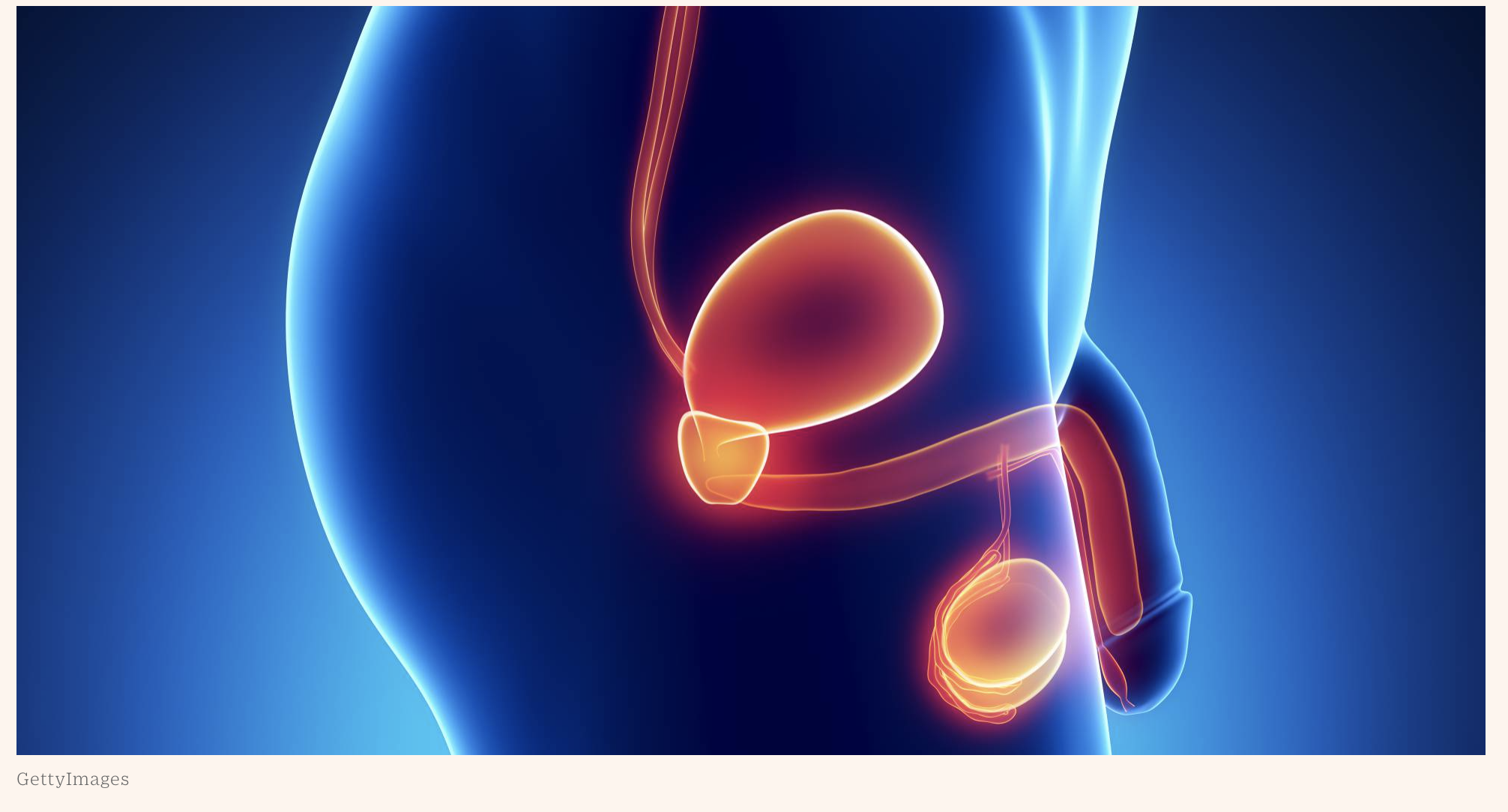
What is the prostate?
The prostate is a gland located in the lower urinary tract, under the bladder and around the urethra (Fig. 1a). Only men have a prostate. It produces the fluid which carries semen. The prostate contains smooth muscles which help to push out the semen during ejaculation.
A healthy prostate is about the size of a large walnut and has a volume of 15-25 millilitres. The prostate slowly grows as men grow older.
Benign prostatic enlargement
Prostate diseases are usually associated with older age. They can cause bothersome symptoms in the lower urinary tract in men over the age of 50. These symptoms may be caused by an enlargement of the prostate, a condition which is known as benign prostatic enlargement (BPE) (Fig. 1b). Other conditions can cause these symptoms and your doctor will take this into account.
Benign prostatic enlargement is a common condition. It is related to hormonal changes which happen as men grow older. Prostate diseases can be very worrying but it is important to know that BPE is not prostate cancer. BPE does not become prostate cancer, even if it is left untreated. However, both benign prostatic enlargement and prostate cancer may develop with age and coexist. You should consult your urologist to discuss any of your concerns.
What are BPH, BPE, and BPO?
Benign prostatic hyperplasia (BPH) is a common benign condition which happens to some extent in all men. This condition is related to hormonal changes which happen as men grow older.
In about half of these men, BPH may result in benign prostatic enlargement (BPE). In turn, this enlargement may obstruct the flow of urine, a condition which is called benign prostatic obstruction (BPO). BPO happens in about half of men with a benign prostatic enlargement.
Your doctor may be referring to your condition by using either of the three words, because these conditions are closely related.
Symptoms associated with BPE
Benign prostatic enlargement (BPE) can affect the way you normally urinate. This happens because the enlarged prostate compresses the urethra at the outlet of the bladder(Fig. 1a and b).
Sometimes the symptoms are mild. For example you may need to urinate more often or find it more difficult to empty your bladder completely. These mild symptoms are a normal part of the aging process – just like decline in mobility, memory, or flexibility. It is possible that your doctor will not recommend treatment for mild symptoms.
Sometimes the symptoms are very bothersome and can have a negative effect on your quality of life. In this case you may benefit from treatment.
The symptoms which are often called lower urinary tract symptoms (LUTS) may be caused by BPE and may be due to other conditions which affect the urinary system.
Types of symptoms
In men with BPE, the symptoms can affect urination in different ways:
- The way you hold the urine in the bladder (storage)
- The way you urinate (voiding)
- How you feel after you urinate (post-micturition)
Storage symptoms include:
- The need to urinate more often than usual
- The need to wake up at night to urinate
- The sudden need to urinate and having trouble postponing it
- Any involuntary loss of urine
Voiding symptoms include:
- A weak stream of urine
- Splitting or spraying of the urine stream
- The flow of urine starts and stops
- Straining when urinating
- It takes a while before the urinary flow starts
- It takes longer to finish urinating
- In rare cases acute or chronic urinary retention
Post-micturition symptoms include:
- The feeling that the bladder is not completely empty
Involuntary loss or dribbling of urine into your underwear shortly after leaving the toilet.
Source: patient.uroweb.org




